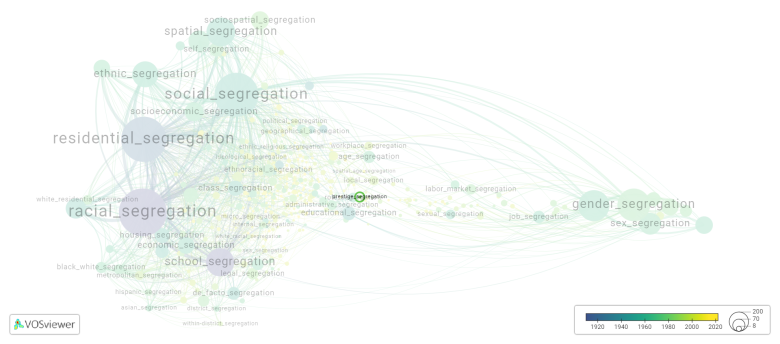Prestige segregation
Date and country of first publication[1]
1992
United States
Definition
Prestige segregation refers to the unequal distribution of prestige or social status within a society, leading to the division and separation of individuals based on their perceived prestige or prestige-related attributes. This can occur in various domains, such as education, employment, and social networks.
In the context of education, prestige segregation can be seen through the concentration of high prestige educational institutions in certain areas or neighborhoods, while lower prestige schools are located in disadvantaged areas. As a result, students from low-income or marginalized communities may have limited access to high-quality education and the opportunities it provides, further perpetuating social inequalities.
In employment, prestige segregation can manifest through the stratification of job positions based on prestige or perceived social value. High-prestige jobs, such as those in the professional or managerial fields, are often concentrated among certain individuals or groups, while lower-prestige jobs, such as manual labor or service jobs, are typically associated with lower social status. This segregation can lead to disparities in earning potential, career advancement, and overall socioeconomic status.
Prestige segregation can also occur in social networks, where individuals with higher social status or prestige tend to associate and interact with others of similar status, excluding those with lower social standing. This can result in social fragmentation and limited opportunities for social mobility for individuals in lower prestige groups, as networks play a crucial role in access to resources, information, and support.
Overall, prestige segregation reflects the unequal distribution of prestige and societal resources, creating barriers to social mobility and reinforcing existing social hierarchies within a society. Addressing and mitigating prestige segregation requires concerted efforts in areas such as education reform, equal job opportunities, and promoting inclusive social networks.
See also
Related segregation forms
Prestige segregation is frequently discussed in the literature with the following segregation forms:
This visualization is based on the study The Multidisciplinary Landscape of Segregation Research.
For the complete network of interrelated segregation forms, please refer to:
References
Notes
- ↑ Date and country of first publication as informed by the Scopus database (December 2023).
At its current state, this definition has been generated by a Large Language Model (LLM) so far without review by an independent researcher or a member of the curating team of segregation experts that keep the Segregation Wiki online. While we strive for accuracy, we cannot guarantee its reliability, completeness and timeliness. Please use this content with caution and verify information as needed. Also, feel free to improve on the definition as you see fit, including the use of references and other informational resources. We value your input in enhancing the quality and accuracy of the definitions of segregation forms collectively offered in the Segregation Wiki ©.
Prestige segregation appears in the following literature
Xu W., Leffler A. (1992). Gender and race effects on occupational prestige, segregation, and earnings. Gender & Society, 6(3), 376-392. https://doi.org/10.1177/089124392006003003
Weeden K.A., Thébaud S., Gelbgiser D. (2017). Degrees of difference: Gender segregation of U.S. doctorates by field and program prestige. Sociological Science, 4(), 123-150. Society for Sociological Science.https://doi.org/10.15195/v4.a6

